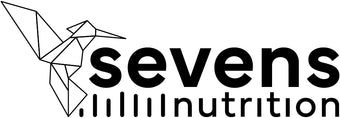The progressive loss of strength and muscle mass is one of the most visible signs of aging. This process, known as sarcopenia , isn't just due to inactivity or the passage of time: at its root lies a deeper and less obvious cause: mitochondrial dysfunction .
Muscles are highly energy-dependent tissues. Each muscle contraction requires large amounts of ATP , which is produced almost exclusively by mitochondria. When these structures become less efficient, the muscle's ability to renew, contract, and repair itself is compromised . This results in weakness, fatigue, and a greater susceptibility to falls or injuries in older adults.
How are mitochondria and muscle mass related?
-
Inefficient energy production reduces contractile capacity and endurance .
-
Increased mitochondrial oxidative stress promotes muscle atrophy.
-
Signaling for the synthesis of new muscle fibers is interrupted.
-
It decreases the ability to eliminate damaged mitochondria (mitophagy), which amplifies the deterioration.
On a practical level, this translates into loss of functional muscle mass , increased dependency, decreased mobility, and a general deterioration in quality of life.
Can this energy-muscle deterioration be reversed?
Yes. Current scientific evidence shows that it's possible to reactivate mitochondrial biogenesis and stimulate muscle growth , even at advanced ages. How?
-
Endurance exercise : one of the most powerful natural activators of mitophagy and the formation of new mitochondria.
-
Adequate and protein-rich nutrition that provides essential amino acids without overloading the system.
-
Strategic supplementation , which provides the cofactors that mitochondria need to function.
Sevens products that support the energy-muscle-mitochondria axis
Magnesium Sevens
Key to muscle contraction, ATP synthesis, and the activation of metabolic enzymes. Supplementing with it helps reduce fatigue and improve muscle recovery.
Sevens Multivitamins
It provides B vitamins, vitamin D, and essential minerals for cell regeneration, muscle function, and energy metabolism.
Omega 3 Sevens
DHA and EPA protect against chronic muscle inflammation, improve mitochondrial function, and promote the maintenance of lean mass in older adults.
Organic Turmeric Sevens
Curcumin stimulates pathways such as AMPK and PGC-1α, which promote both mitochondrial regeneration and muscle protein synthesis.
Curcumin C3 Reduce Sevens
Thanks to its ultra-bioavailable form, it has a faster and more sustained effect on reducing muscle oxidative damage and improving post-exercise recovery.
Detox Sevens
It facilitates the elimination of metabolic waste accumulated during exercise, promoting better cellular and muscular recovery.
Conclusion
Muscle weakness isn't an inevitable consequence of aging: it's a symptom of fatigued mitochondria . With a movement-based strategy, functional nutrition, and supplementation like the one Sevens offers, it's possible to revitalize muscle from the cellular energy core , promoting strength, mobility, and independence at any age.



